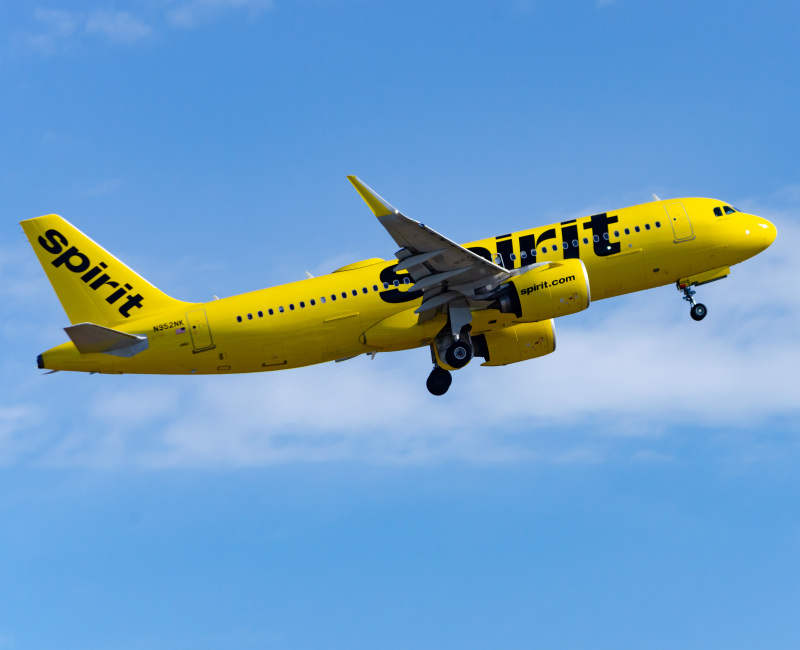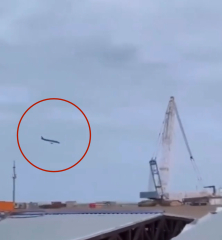The pilot shortage in recent years, prompted in large part due to lay-offs and early retirements stemming from the COVID-19 pandemic, has hit regional airlines the hardest. But some are fighting back.

For months now regional airlines have been cutting routes and reducing flying as they have been unable to onboard the necessary pilots to fly aircraft. Many small towns have been left in the dark with little hope for future service restoration.
All in, American, United, and Delta have exited 73 markets since April 2020 when COVID-19 began to disrupt the aviation industry. Some of these cities have lost air service entirely as they don't qualify for Essential Air Service (EAS) subsidies from the federal government.
Some airlines have raised salaries for regional pilots by historic amounts to fix the problem: American for example raised rates to a minimum of $90 an hour for its regional pilots, far above the starting rates for mainline carriers such as Frontier or Spirit, offering around $62 an hour for entry-level pilots.

SkyWest is going in a different direction, however. The regional airline that flies on behalf of American, Alaska, United, and Delta is moving forward with its plans for a subsidiary: SkyWest Charter.
SkyWest announced last summer that it hoped to shift the categorization of some of their EAS routes to Federal Air Regulation "Part 135", basically allowing the airline to employ first-officers with less training and fewer hours as Part 135 operations are not classified as a regularly scheduled air carrier and operator.

The decision has taken months to actually take given the opposition. The Air Line Pilots Association (ALPA) has been arguing against the policy change for quite a while, sending in a letter to transportation secretary Pete Buttigieg in part, “[The DOT would] degrade the level of air safety for small communities by granting federal funds to permit a dominant and profitable scheduled airline to shift its work to a wholly-owned charter subsidiary and use lesser-qualified first officers in the process.”
Launching the SkyWest Charter subsidiary crucially gives SkyWest the ability to keep its normal operations classified as Part 121 (Regularly scheduled air carrier and operator) while the EAS and more on-demand operations can be categorized as Part 135 (Air carrier and operator).

Despite these complaints, SkyWest has begun to operate on-demand charter flights at the beginning of April. Once the final hurdle—getting clearance from the FAA commuter authority—we should expect to see many EAS routes operated by SkyWest using less experienced first officers. While ALPA has expressed valid concerns surrounding safety, SkyWest is hoping that the change will bring more pilots out of training more quickly to fill crucial cockpit seats.
Existing requirements have slowed down SkyWest in recovering from the pilot shortage. SkyWest's Q1 earnings and recent statements have all suggested that the airline has been doing a good job at moving towards the end of the shortage—pilot block hours are expected to be reduced by 14% compared to 2022 instead of the originally predicted 19%.
SkyWest will also have to deal with major airlines like Delta, Alaska, and American all renegotiating mainline pilot contracts to historic levels, and many regional pilots may be moving to the mainline carriers to fill demand and take advantage of higher salaries.

As a whole, it is unclear exactly when full operations of SkyWest Charter will start, but in the short term, it appears as an effective solution to the pilot shortage. Regarding the safety concerns, SkyWest adamantly believes operations won't be compromised given the extensive procedures in place and the marginally small changes in training requirements.
Moreover, the change would allow EAS airports to have continued reliable service and allow SkyWest to maximize its service to small airports desperately in need of service.
South African Airways Eyes India–South Africa Route » PHOTOS: Azerbaijan Airlines E190 Crashes in Kazakhstan » Ethiopian Airlines Expands Fleet with Second Airbus A350-1000 »
Comments (1)
 Goforride
"Once the final hurdle—getting clearance from the FAA commuter authority—we should expect to see many EAS routes operated by SkyWest using less experienced first officers." does not square with other available information. Skywest has been operating Essential Airline Service flight with Delta, but they are down to a dozen or so planes and Delta has already said they will eliminate all 50 seaters by the end of this summer.
Previously published reports have said United Airlines will not agree to United Express or even codeshare operations with Skywest Charter. At least 3 cities currently receiving United Express/Skywest service have said they will not accept Skywest Charter, although their power to decide what airline provides it is limited.
Other cities have agreed to accept Skywest Charter rather than take a chance on losing jet service altogether.
Goforride
"Once the final hurdle—getting clearance from the FAA commuter authority—we should expect to see many EAS routes operated by SkyWest using less experienced first officers." does not square with other available information. Skywest has been operating Essential Airline Service flight with Delta, but they are down to a dozen or so planes and Delta has already said they will eliminate all 50 seaters by the end of this summer.
Previously published reports have said United Airlines will not agree to United Express or even codeshare operations with Skywest Charter. At least 3 cities currently receiving United Express/Skywest service have said they will not accept Skywest Charter, although their power to decide what airline provides it is limited.
Other cities have agreed to accept Skywest Charter rather than take a chance on losing jet service altogether.
Add Your Comment
SHARE
TAGS
NEWS SkyWest Regional Flying Pilot Shortage ALPA United Delta American Regional AirlinesRECENTLY PUBLISHED
 PHOTOS: Azerbaijan Airlines E190 Crashes in Kazakhstan
An Azerbaijan Airlines Embraer E190 crashed approximately 3 km from the city of Aktau today, December 25. Images from the scene show that the aircraft lost speed and then crashed, followed by a large explosion.
NEWS
READ MORE »
PHOTOS: Azerbaijan Airlines E190 Crashes in Kazakhstan
An Azerbaijan Airlines Embraer E190 crashed approximately 3 km from the city of Aktau today, December 25. Images from the scene show that the aircraft lost speed and then crashed, followed by a large explosion.
NEWS
READ MORE »
 South African Airways Eyes India–South Africa Route
As part of its recovery strategy, South African Airways (SAA) is exploring the reinstatement of direct flights between India and South Africa. SAA, along with Minister of Tourism Patricia de Lille, on December 3, 2024, participated in a high-level delegation to India to strengthen aviation and tourism ties between the two nations.
ROUTES
READ MORE »
South African Airways Eyes India–South Africa Route
As part of its recovery strategy, South African Airways (SAA) is exploring the reinstatement of direct flights between India and South Africa. SAA, along with Minister of Tourism Patricia de Lille, on December 3, 2024, participated in a high-level delegation to India to strengthen aviation and tourism ties between the two nations.
ROUTES
READ MORE »
 Ethiopian Airlines Expands Fleet with Second Airbus A350-1000
Ethiopian Airlines, Ethiopia's national carrier, has taken delivery of its second Airbus A350-1000, registered as ET-BAX. This advanced aircraft is powered by Trent XWB-97 engines, further solidifying the airline’s commitment to modernizing its fleet.
NEWS
READ MORE »
Ethiopian Airlines Expands Fleet with Second Airbus A350-1000
Ethiopian Airlines, Ethiopia's national carrier, has taken delivery of its second Airbus A350-1000, registered as ET-BAX. This advanced aircraft is powered by Trent XWB-97 engines, further solidifying the airline’s commitment to modernizing its fleet.
NEWS
READ MORE »




